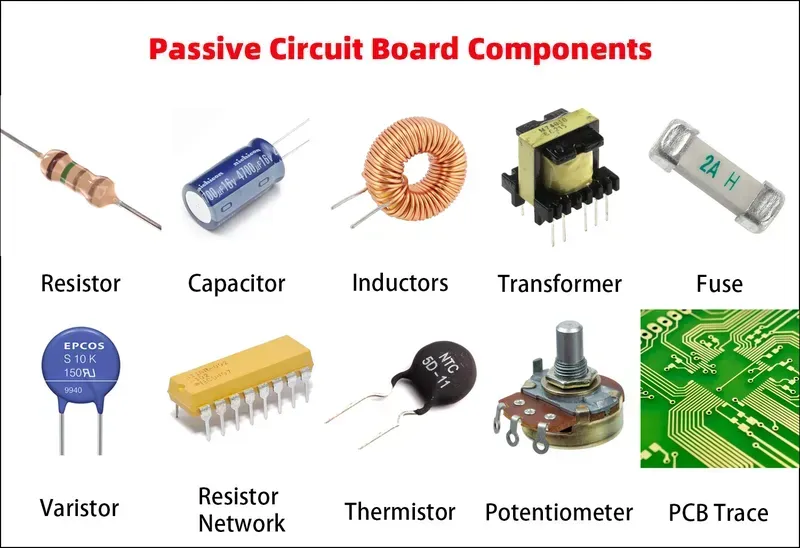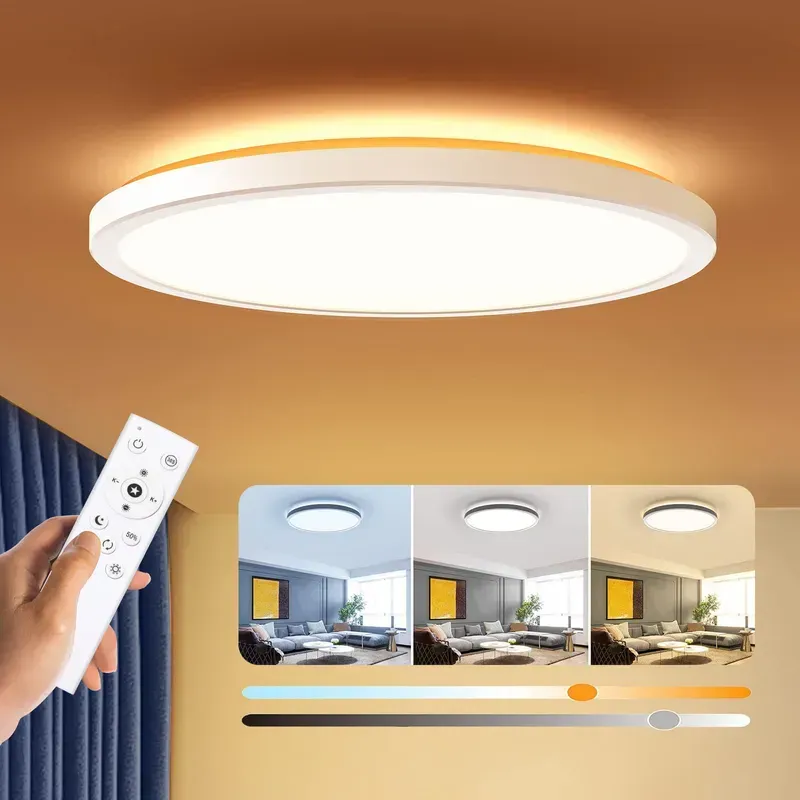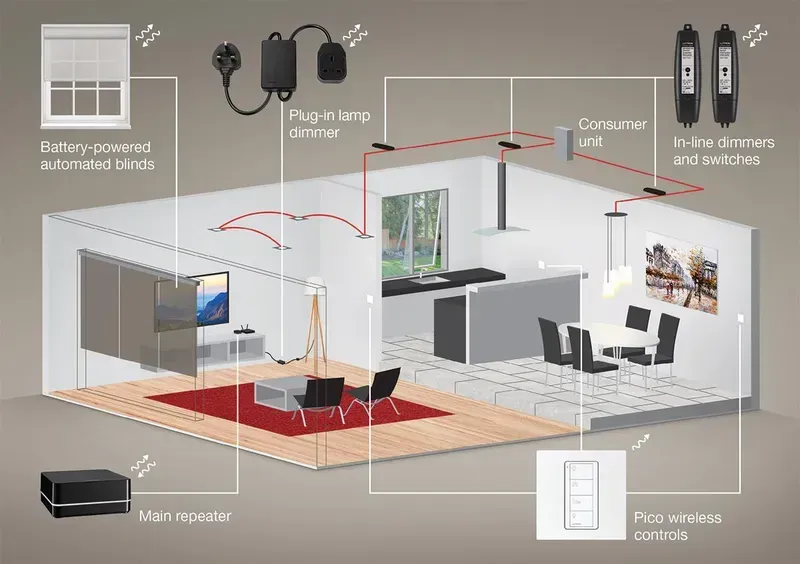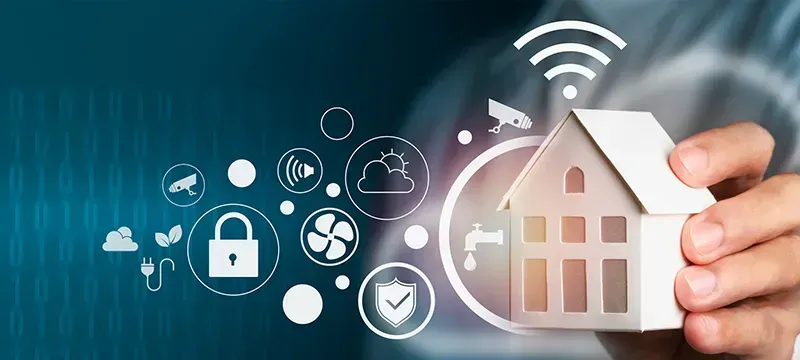The Building Lighting Atmosphere Control Board Solution

In today's world, lighting is no longer just about illumination; it's about creating an atmosphere. From setting the mood in a restaurant to enhancing productivity in an office, the right lighting can transform a space. This transformation hinges on sophisticated control systems, and at the heart of these systems lies the Atmosphere Control Board. But what makes these boards so critical, and how can you ensure you're using the best technology for your building's lighting needs? Zero One Solution Limited is here to provide a comprehensive PCB solution, and in this article, we'll explore the ins and outs of building lighting atmosphere control boards and how Zero One Solution Limited can help bring your vision to light.
Introduction to Building Lighting Atmosphere Control
In modern building design, lighting is no longer just about illumination; it's about creating an atmosphere. Building Lighting Atmosphere Control refers to the sophisticated systems and strategies employed to dynamically adjust and manage lighting within a space, impacting mood, productivity, and energy efficiency. These systems go beyond simple on/off switches, offering nuanced control over light intensity, color temperature, and distribution to tailor the environment to specific needs and preferences.
Modern building lighting atmosphere control is crucial for several reasons:
- Enhanced User Experience:
Adjustable lighting can improve comfort, reduce eye strain, and create a more inviting and productive environment for occupants. - Energy Efficiency:
Smart lighting systems can optimize energy consumption by dimming lights when natural light is abundant or turning them off in unoccupied areas, leading to significant cost savings. - Mood and Productivity:
Different lighting settings can influence mood and productivity. For example, cooler, brighter light can enhance alertness, while warmer, dimmer light can promote relaxation. - Aesthetic Appeal:
Well-designed lighting can enhance the architectural features of a building and create visually stunning effects. - Adaptability:
Atmosphere control systems allow for easy adjustments to lighting based on the time of day, specific events, or individual preferences.
Key Components of an Atmosphere Control Board

An atmosphere control board is a sophisticated piece of technology, integrating several key components to manage and modulate lighting environments effectively. These components work in synergy to provide precise control over lighting parameters, contributing to energy efficiency, user comfort, and the creation of desired ambiances. Understanding these components is crucial for anyone involved in designing, implementing, or maintaining advanced lighting systems.
- Microcontrollers
At the heart of any atmosphere control board lies the microcontroller. This acts as the brain, processing data from sensors, executing programmed instructions, and controlling the output to lighting fixtures. Microcontrollers vary in processing power, memory capacity, and the number of input/output (I/O) pins, allowing for customization based on the complexity of the lighting system. - Sensors
Sensors are critical for gathering environmental data, enabling the control board to make informed decisions. Common types of sensors include: * **Ambient Light Sensors:** Measure the amount of natural light available, allowing the system to automatically adjust artificial lighting levels to maintain a consistent level of illumination. * **Occupancy Sensors:** Detect the presence of people in a space, turning lights on when needed and off when the area is vacant, conserving energy. * **Temperature Sensors:** Monitor the temperature of the environment to optimize lighting for comfort and energy efficiency. * **Color Sensors:** Detect the color of the light in the environment to allow for fine-tuning of the color temperature of the lights. - Communication Interfaces
Communication interfaces allow the control board to communicate with other devices and systems, enabling centralized control and monitoring. Common interfaces include: * **Wi-Fi:** Enables wireless communication with a central control system or mobile devices for remote control and monitoring. * **Bluetooth:** Provides short-range wireless communication for direct control via smartphones or tablets. * **Zigbee:** A low-power wireless communication protocol ideal for connecting multiple lighting devices in a mesh network. * **DALI (Digital Addressable Lighting Interface):** A widely used protocol for controlling individual lighting fixtures, allowing for dimming, color control, and status monitoring. * **Ethernet:** Provides a wired network connection for reliable communication with a building management system (BMS) or other network devices. - Power Supply
The power supply provides the necessary electrical power to operate all the components on the control board. It must be reliable and efficient to ensure proper operation of the lighting system. Considerations include voltage requirements, current capacity, and protection against overvoltage and overcurrent. - Output Drivers
Output drivers are responsible for controlling the power delivered to the lighting fixtures. They switch the current on and off or modulate the voltage to dim the lights. Different types of output drivers are available, depending on the type of lighting fixture being controlled (e.g., LED, fluorescent, incandescent). - Memory
Memory components store the firmware, configuration settings, and data logs for the control board. The amount of memory required depends on the complexity of the system and the amount of data that needs to be stored. Types of memory include Flash memory, EEPROM, and RAM.
The Role of PCB Design in Lighting Control

PCB design is pivotal in lighting control systems, directly influencing their efficiency, reliability, and overall performance. A well-designed PCB ensures optimal signal integrity, efficient power distribution, and effective thermal management, all crucial for consistent and dependable lighting operation.
- Optimized Performance
A meticulously designed PCB layout minimizes signal interference and impedance mismatches, leading to enhanced performance in lighting control functions such as dimming, color mixing, and scene setting. Proper trace routing and component placement are essential for achieving precise and responsive control. - Efficient Power Distribution
Lighting control systems often require multiple voltage levels to power various components. PCB design facilitates efficient power distribution by incorporating appropriate trace widths, power planes, and decoupling capacitors. This ensures a stable power supply, reducing voltage drops and preventing malfunctions. - Thermal Management
High-power lighting applications generate significant heat. Effective thermal management is vital to prevent overheating and ensure long-term reliability. PCB design contributes to thermal management through the use of thermal vias, heat sinks, and careful component placement to dissipate heat effectively. - Signal Integrity
Lighting control systems rely on precise communication between microcontrollers, sensors, and other components. A well-designed PCB maintains signal integrity by minimizing signal reflections, crosstalk, and electromagnetic interference (EMI). This ensures accurate data transmission and reliable system operation. - Component Integration
Modern lighting control systems often incorporate a variety of components, including microcontrollers, sensors, communication interfaces, and power drivers. PCB design allows for seamless integration of these components, optimizing space utilization and minimizing the overall system footprint. - Reduced EMI
Lighting systems can be a significant source of electromagnetic interference (EMI). Careful PCB design, including proper grounding techniques, shielding, and filtering, helps minimize EMI emissions and susceptibility, ensuring compliance with regulatory standards and preventing interference with other electronic devices.
Zero One Solution Limited: Your Partner in PCB Solutions

Zero One Solution Limited stands at the forefront of PCB solution providers, specializing in rapid prototyping and offering comprehensive one-stop services, encompassing everything from PCB design to manufacturing and assembly. Since our inception in 2011, we've rapidly ascended as a trusted name in the PCB assembly solutions industry. Our core mission is to empower clients by accelerating their product development cycles, enabling them to swiftly introduce innovative solutions to the market with unparalleled efficiency. Headquartered in Shenzhen, the heart of China's electronics manufacturing, and complemented by a strategic branch office in Dubai, we operate within a robust global PCBA supply chain network, ensuring seamless access to worldwide resources and support.
- Rapid Prototyping Expertise
We excel in rapid-response R&D prototype manufacturing, enabling you to quickly test and refine your lighting atmosphere control board designs. - One-Stop PCB Services
From initial PCB design and layout to manufacturing and final assembly, we provide a complete suite of services to streamline your project. - Global PCBA Supply Chain Network
With our headquarters in Shenzhen and a branch office in Dubai, we offer seamless access to a global network of resources and support. - Commitment to Quality
We adhere to stringent quality control standards throughout the entire process, ensuring the reliability and performance of your lighting control boards. - Focus on Innovation
We empower clients to accelerate product development and bring innovative lighting solutions to market with exceptional efficiency. - Dedicated Support
Our team of experienced engineers and technicians is dedicated to providing comprehensive support throughout your project, from design to delivery.
Benefits of Using Advanced Lighting Control Systems
Advanced lighting control systems offer a multitude of benefits, transforming how we manage and interact with lighting in buildings. Implementing smart lighting control not only leads to significant energy savings but also enhances the user experience and streamlines building management. These systems provide granular control over lighting parameters, allowing for optimization based on occupancy, time of day, and specific task requirements, ultimately creating more efficient, comfortable, and sustainable environments.
- Energy Savings
Smart lighting control systems significantly reduce energy consumption by automatically adjusting light levels based on occupancy, daylight availability, and pre-set schedules. Dimming capabilities further optimize energy use by lowering light output when full brightness is not needed. These systems ensure that energy is not wasted on unnecessary illumination, contributing to lower electricity bills and a reduced carbon footprint. - Enhanced User Experience
Advanced lighting controls enable personalized lighting experiences, allowing users to adjust light levels and color temperatures to suit their preferences and activities. This creates more comfortable and productive environments for occupants. Automated scene setting allows for one-touch adjustments to create the perfect ambiance for different scenarios, improving overall satisfaction and well-being. - Improved Building Management
Smart lighting systems provide real-time data on energy usage, occupancy patterns, and system performance, enabling building managers to make informed decisions about lighting strategies. Remote monitoring and control capabilities allow for efficient management of lighting across entire facilities, reducing the need for manual adjustments and improving overall operational efficiency. Integration with other building management systems allows for coordinated control of lighting, HVAC, and security systems, further optimizing building performance. - Increased Lifespan of Lighting Components
By reducing the strain on lighting components, such as lamps and ballasts, smart lighting controls can extend their lifespan. Features like soft starting and voltage regulation minimize wear and tear, resulting in fewer replacements and reduced maintenance costs. This not only saves money but also minimizes disruption to building operations. - Compliance with Building Codes and Standards
Many advanced lighting control systems are designed to comply with building codes and energy efficiency standards, helping building owners meet regulatory requirements and qualify for incentives and rebates. This ensures that lighting systems are installed and operated in a manner that minimizes energy consumption and maximizes environmental benefits. Compliance also demonstrates a commitment to sustainability and responsible resource management. - Adaptability and Scalability
Advanced lighting control systems are designed to be highly adaptable and scalable, allowing them to be easily customized and expanded to meet changing needs. Whether it's adding new zones, integrating with other systems, or upgrading to new technologies, these systems can be readily adapted to accommodate evolving requirements. This ensures that lighting investments remain relevant and effective over the long term.
Customization Options for Atmosphere Control Boards

Atmosphere control boards offer a wide array of customization options to tailor lighting to specific needs and preferences. These options range from adjusting the intensity and color of light to creating dynamic scenes that adapt to different times of day or events. Customization empowers users to create the perfect ambiance, enhance energy efficiency, and improve overall user experience.
- Dimming Control
Precise dimming capabilities allow users to adjust the brightness of lights, saving energy and setting the mood. Advanced dimming technologies can prevent flickering and ensure smooth transitions. - Color Temperature Adjustment
Adjusting color temperature (Kelvin) allows users to shift from warm, inviting light to cool, energizing light. This feature is crucial for simulating natural daylight and enhancing productivity. - RGB Color Control
Full RGB spectrum control enables users to create custom colors and dynamic lighting effects, suitable for architectural accents, entertainment venues, and brand expression. - Scene Setting
Pre-programmed lighting scenes can be created and activated with a single touch, adapting the lighting to various activities such as meetings, presentations, or relaxation. - Zoning Control
Dividing lighting into zones allows for independent control of different areas within a building, optimizing energy use and creating targeted lighting environments. - Scheduling and Automation
Automated schedules can adjust lighting based on time of day, occupancy, or external conditions, maximizing energy efficiency and minimizing manual intervention. Integration with building management systems (BMS) further enhances automation capabilities. - Sensor Integration
Integrating sensors such as daylight and occupancy sensors enables adaptive lighting that responds to environmental conditions and user presence, further optimizing energy use and enhancing user comfort.
Case Studies: Successful Implementations of Lighting Control Solutions

Examining real-world applications of building lighting atmosphere control boards demonstrates their effectiveness and versatility. These case studies highlight how tailored lighting solutions enhance environments, improve energy efficiency, and offer unique user experiences across various settings.
- Commercial Office Buildings
In modern office spaces, lighting control systems adjust light levels based on occupancy and daylight availability, significantly reducing energy consumption. For instance, a large office complex in New York City implemented a smart lighting system that resulted in a 40% reduction in lighting energy usage. The system also allowed employees to personalize lighting in their individual workspaces, improving comfort and productivity. - Educational Institutions
Universities and schools are leveraging lighting control to create optimal learning environments while minimizing costs. A case study at a university in California showed that implementing a networked lighting system with dimming capabilities and occupancy sensors reduced lighting energy consumption by 35%. Furthermore, the system improved the quality of lighting in classrooms and lecture halls, contributing to a better learning atmosphere. - Healthcare Facilities
Hospitals and clinics require precise and reliable lighting solutions to ensure patient comfort and staff efficiency. A hospital in Germany implemented a lighting control system that allows for different lighting scenes to be set for various medical procedures and patient needs. The system also includes circadian lighting, which adjusts the color temperature of the light throughout the day to support patients' natural sleep-wake cycles, promoting faster recovery and well-being. - Retail Spaces
Retail environments benefit from lighting control systems that enhance the shopping experience and highlight merchandise effectively. A luxury retail store in Dubai utilized a dynamic lighting system to create visually appealing displays and set the mood for different product categories. The system's flexibility allows for easy adjustments to lighting scenes based on promotions, events, and seasonal changes, resulting in increased customer engagement and sales. - Residential Buildings
Homeowners are increasingly adopting smart lighting control to improve convenience, security, and energy efficiency. A high-end residential complex in London integrated a comprehensive lighting control system that allows residents to control lighting from their smartphones or tablets. The system includes features such as automated dimming, scene setting, and remote access, providing homeowners with greater control over their living environment and reducing energy waste. - Industrial Facilities
Warehouses and manufacturing plants are using lighting control systems to enhance safety, productivity, and energy efficiency. A large distribution center in Shenzhen implemented a networked lighting system with motion sensors and daylight harvesting, resulting in a 50% reduction in lighting energy consumption. The system also improved visibility and safety in the facility, reducing the risk of accidents and improving overall operational efficiency.
Future Trends in Building Lighting Technology

The future of building lighting technology is poised for significant advancements, driven by the convergence of several key trends. These include the integration of the Internet of Things (IoT), the application of Artificial Intelligence (AI), and the increasing demand for energy-efficient and human-centric lighting solutions. These technologies promise to revolutionize how we interact with and manage lighting in buildings, creating more intelligent, responsive, and sustainable environments.
- IoT Integration for Smart Lighting
The Internet of Things (IoT) is transforming building lighting by enabling seamless connectivity and control. Lighting systems are becoming integrated with other building systems, such as HVAC and security, allowing for coordinated and automated responses. This leads to increased energy efficiency, improved occupant comfort, and enhanced building management capabilities. Wireless protocols like Zigbee, Z-Wave, and Bluetooth Mesh are facilitating the deployment of IoT-enabled lighting solutions. - AI-Driven Automation
Artificial Intelligence (AI) is playing a crucial role in optimizing lighting performance. AI algorithms can analyze data from sensors and user inputs to automatically adjust lighting levels, color temperature, and even lighting scenes. This ensures that lighting is tailored to the specific needs of occupants and the environment, reducing energy waste and improving visual comfort. Predictive maintenance, powered by AI, also helps to identify potential issues before they become major problems, reducing downtime and maintenance costs. - Human-Centric Lighting
Human-centric lighting (HCL) is an approach that prioritizes the health and well-being of building occupants. HCL systems mimic natural daylight patterns, providing the right light at the right time to support the body's circadian rhythm. This can lead to improved sleep quality, enhanced mood, and increased productivity. Dynamic lighting systems that automatically adjust color temperature and intensity throughout the day are becoming increasingly popular. - Li-Fi Technology
Light Fidelity (Li-Fi) is an emerging technology that uses light to transmit data wirelessly. Li-Fi offers several advantages over traditional Wi-Fi, including higher bandwidth, lower latency, and improved security. In building lighting applications, Li-Fi can be used to provide high-speed internet access and location-based services, enhancing the user experience and creating new opportunities for smart building applications. - Energy Harvesting
Energy harvesting technologies are being developed to power lighting systems using ambient energy sources, such as solar, thermal, and kinetic energy. This can reduce the reliance on traditional power sources and lower energy costs. Self-powered lighting systems are particularly well-suited for remote locations and off-grid applications. - Smart Materials
Smart materials, such as electrochromic glass and self-dimming films, are being integrated into lighting systems to dynamically control light transmission and glare. These materials can automatically adjust their properties in response to changing environmental conditions, optimizing lighting performance and reducing energy consumption. Smart windows, for example, can tint automatically to block out excessive sunlight, reducing the need for artificial lighting and cooling.
FAQs About Building Lighting Atmosphere Control Boards
Navigating the complexities of building lighting atmosphere control boards can raise numerous questions. This section addresses frequently asked questions concerning the design, implementation, and maintenance of these sophisticated systems, offering clarity and guidance for optimizing your lighting environment.
- What are the primary functions of a building lighting atmosphere control board?
A building lighting atmosphere control board primarily manages and automates lighting systems to optimize energy consumption, enhance user experience, and improve overall building management. Key functions include dimming control, color temperature adjustment, scene setting, and integration with other building management systems. - How does a lighting atmosphere control board contribute to energy savings?
By implementing features like occupancy sensing, daylight harvesting, and scheduled lighting adjustments, these control boards reduce energy waste. They ensure that lights are only used when and where needed, and at the appropriate intensity, leading to significant reductions in energy consumption and costs. - What types of sensors are commonly integrated into lighting atmosphere control boards?
Common sensors include ambient light sensors (for daylight harvesting), occupancy sensors (to detect room presence), and temperature sensors (to adjust lighting based on thermal conditions). These sensors provide real-time data that the control board uses to optimize lighting conditions. - Can lighting atmosphere control boards be customized for specific building needs?
Yes, these boards can be highly customized. Customization options include adjusting dimming curves, setting specific color temperatures, creating unique lighting scenes, and integrating with other building systems like HVAC and security. This flexibility allows the lighting to be tailored to the precise needs of the building and its occupants. - What are the key considerations for selecting a PCB manufacturer for lighting atmosphere control boards?
Key considerations include the manufacturer's experience with lighting control systems, their ability to provide rapid prototyping, their adherence to quality standards, and their capacity for both design and assembly. A one-stop solution provider like Zero One Solution Limited can streamline the process and ensure high-quality results. - How do I troubleshoot common issues with building lighting atmosphere control boards?
Common issues include communication failures, sensor malfunctions, and programming errors. Troubleshooting steps involve checking connections, testing sensors, reviewing programming logic, and consulting with the manufacturer or a qualified technician. Regular maintenance and monitoring can prevent many of these issues. - What future trends are expected to impact building lighting atmosphere control boards?
Future trends include increased IoT integration, AI-driven automation, and the use of advanced sensors to create more responsive and intelligent lighting systems. These advancements will enable even greater energy savings, improved user experiences, and more sophisticated building management capabilities.
In conclusion, the building lighting atmosphere control board is the nerve center of modern smart lighting systems, enabling unparalleled customization and energy efficiency. Zero One Solution Limited stands ready to partner with you, offering comprehensive PCB solutions from design to manufacturing and assembly. By leveraging our expertise and rapid prototyping capabilities, you can accelerate your product development and bring innovative lighting solutions to market faster. Contact Zero One Solution Limited today to discuss your project and discover how we can help you illuminate the future.
 AnyPCBA
AnyPCBA